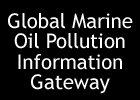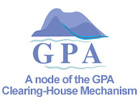|
|
|
East
Asian Seas Action Plan
Action
Plan: The East Asian Seas Action Plan developed a systematic
approach in delivering a ten year plan to pragmatically co-ordinate
the management, conservation, restoration and sustainable use
of the marine environment of the East Asian seas. The planned
activities, taking into account the Regional Action Plan for
the Global Programme of Action for land-based activities, the
UNEP/GEF Project "Reversing Environmental Degradation Trends
in the South China Sea and Gulf of Thailand" and the International
Coral Reef Action Network, will provide effective means for
implementing and ensuring maximum benefits to the member countries.
The East Asian Seas Action Plan is geared towards co-operation
with non-government and government organizations and the private
sector to achieve its objectives.
COBSEA
• EAS/RCU: The Regional Co-ordinating Unit (EAS/RCU)
serves as Secretariat for COBSEA (the co-ordinating body of
the East Asian Seas Action Plan), and is the lead agency of
the United Nations for marine environmental matters in East
Asia, responsible for co-ordinating the activities of governments,
NGOs, UN and donor agencies, and individuals in caring for
the region's marine environment. Recently the RCU has revised
the Action Plan to include monitoring and environmental assessment,
technology transfer, and environmental governance, worked
with UNEP/GPA to address pollution from land-based activities
and prepared a transboundary diagnostic analysis of the South
China Sea.
|
Sustainable
Development Strategy for the Seas of East Asia
The
development of a Sustainable
Development Strategy for the Seas of East Asia
was initiated and prepared by PEMSEA in consultation with 12
participating Governments (Brunei
Darussalam, Cambodia, China, Democratic People’s Republic
of Korea, Indonesia, Japan, Malaysia, Philippines, Republic
of Korea, Singapore, Thailand and Vietnam.
 The Putrajaya
Declaration on Regional Co-operation for Sustainable Development
of the Seas of East Asia and the Strategy were adopted during
a Ministerial Forum held in December 2003.
The Putrajaya
Declaration on Regional Co-operation for Sustainable Development
of the Seas of East Asia and the Strategy were adopted during
a Ministerial Forum held in December 2003.
Previous
efforts of countries and international agencies to arrest
environmental degradation in the Seas of East Asia have fallen
short of tangible and lasting benefits to the environment
and to the quality of life of the people of the region. The
Sustainable Development Strategy is the document that expresses
the shared vision of the countries and other stakeholders
for the Seas of East Asia, and the way by which they will
achieve that shared vision. It provides principles and guidelines
for action to address issues and problems in the region. The
document does not reflect any individual country or sectoral
interest but presents a regional perspective in addressing
common issues and concerns. The Sustainable Development Strategy
offers a integrated approach to environmental management,
based on:
-
functional partnerships among governments, international
agencies, civil society and the private sector;
-
inter-linkages between multilateral environmental agreements,
regional programmes of action, national policies and programmes
and local operational activities;
- synergies
that exist naturally within the global environment; and
- improved
coastal and ocean governance as part of sustainable development
policy.
Concerning
shipping and oil pollution it is stated in the Declaration
that the Strategy will facilitate synergistic actions to enhance
maritime safety and protection of the marine environment from
pollution and environmental damage caused by ships, including
the introduction of alien invasive species, and oil and chemical
pollution preparedness and response.
|
GEF
International Waters Project
The
significant (32 million USD) GEF Project on
Reversing Environmental Degradation Trends in the South China
Sea and Gulf of Thailand, implemented by UNEP, represents
the first attempt to develop regionally co-ordinated programmes
of action designed to reverse environmental degradation particularly
in the area of coastal habitat degradation and loss, halt land-based
pollution and address the issue of fisheries over-exploitation.
The
basis for the project is the
Reducing
Environmental Stress in the Yellow Sea Large Marine Ecosystem.
The Yellow Sea is one of the most intensely exploited areas
in the world. This Sea is a semi-enclosed basin, shallow but
rich in resources, and its waters are a highway for international
shipping. Large cities, among them Shanghai, Dalian, Tianjin
and Seoul, depend on the Yellow Sea as a source of marine resources
for human nutrition, economic development, recreation and tourism.
The analysis conducted indicated the following major transboundary
environmental problems: (i) Decline/collapse of transboundary
fish stocks; (ii) degradation of Biodiversity and of critical
habitats; (iii) water quality deterioration; (iv) unsanitary
conditions due to dispersion of pathogens and contaminants threatening
human health and mariculture. The objective of the proposed
project is to promote multi-country ecosystem based management
practices with the aim of reducing stresses to the environment
due to population and industrialization pressures. The project
will enhance consultations among littoral countries building
on existing partial agreements (APEC etc.) and operationalizing
elements of UNEP's Regional Seas Programme (NOWPAP). The project
will complement activities of the East Asian Seas GEF project. |
Partnership
in Environmental Management for the Seas of East Asia
Partnership
in Environmental Management for the Seas of East Asia (PEMSEA)
is a GEF funded project, focusing on "building partnerships
within and among governments of the region, as well as across
public and private sectors of the economy. The goal is to reduce
or remove barriers to effective environmental management, including
inadequate or inappropriate policies, disparate institutional
and technical capabilities and limited investment in environmental
facilities and services". PEMSEA is "based on two
management frameworks developed and tested in an earlier GEF
Project: Integrated coastal management, addressing land-water
interactions and the impacts of human activity in coastal areas;
and risk assessment/risk management, applying to subregional
sea areas and the impacts of human activities on marine ecosystems."
PEMSEA web resources include Virtual ICM; a Legal Information
Database Reference Catalogue; and a Directory of Research and
Management Institutions in Southeast Asia, and a database of
Good Practices. |
Association
of Southeast Asian Nations
The
Association
of Southeast Asian Nations
(ASEAN) was
established in 1967 and has ten member countries: Brunei, Cambodia,
Indonesia, Laos, Malaysia, Myanmar, Philippines, Singapore,
Thailand and Viet Nam. The ASEAN Declaration states that the
aims and purposes of the Association are: to accelerate the
economic growth, social progress and cultural development in
the region through joint endeavours in the spirit of equality
and partnership in order to strengthen the foundation for a
prosperous and peaceful community of Southeast Asian nations,
and to promote regional peace and stability through abiding
respect for justice and the rule of law in the relationship
among countries in the region and adherence to the principles
of the United Nations Charter. In 1995, the ASEAN Heads of States
and Government re-affirmed that "Cooperative peace and shared
prosperity shall be the fundamental goals of ASEAN." See also
|
Tokyo
Memorandum of Understanding on Port State Control
Memorandum
of Understanding on Port State Control for the Asia and Pacific
Region
(Tokyo MoU) According to the MoU each Authority will establish
and maintain an effective system of Port State Control with
a view of ensuring that, without discrimination as to flag,
foreign merchant ships visiting the ports of its State comply
with the standards laid down in the relevant international instruments. |
UNEP
Regional Office for Asia and the Pacific
Working
closely with the Division of Regional Co-operation and Representation
in UNEP's Nairobi-based headquarters, the UNEP
Regional Office for Asia and the Pacific (ROAP) looks
to adopt global environmental policy to regional priorities
and needs. It acts as a catalyst, co-ordinator, facilitator
and mobilizer of resources. It puts particular emphasis on building
partnerships with regional and sub-regional intergovernmental
fora, other UN agencies, national governments, NGOs, the private
sector, academic and research institutions, and civil society,
and the media. |
UNEP
Regional Resource Centre for Asia and the Pacific
In
Asia and the Pacific Region, UNEP's Division of Early Warning
and Assessment (DEWA) is implemented through the facility of
UNEP Regional
Resource Centre for Asia and Pacific (RRC.AP) situated within
the Asian Institute of Technology (AIT), Bangkok, Thailand.
UNEP RRC.AP was initially established in 1989 as a GRID facility,
which was later expanded, to encompass DEWA activities. There
are three components in the programme: (i) Capacity Building
and Servicing, (ii) Data Management, and (iii) Assessment and
Reporting. Assessment reports and Early Warning Systems are
being developed through these three components. At present,
RRC.AP is focusing on four early warning issues based on the
recommendation of the Advisory Committee: GLOF, Water, Land
Cover and Air. Activities have been carried out under the direct
supervision of the DEWA, in close coordination with UNEP's Regional
Office for Asia and the Pacific (ROAP). |
UN
Economic and Social Commission for Asia and the Pacific
The
UN Economic
and Social Commission for Asia and the Pacific (ESCAP) organizes
seminars and workshops on various issues relating to water resources,
including: Water resources assessment; Integrated water resources
development and management; Protection of water resources, water
quality and aquatic ecosystems; River basin development and
management; Promotion of infrastructure development and investment
for drinking water supply and sanitation; Water pricing and
promotion of private investment in the water sector; Water demand
management, water saving and economic use of water; and Mitigation
of water-related natural disasters, particularly flood loss
reduction. |

|
|


